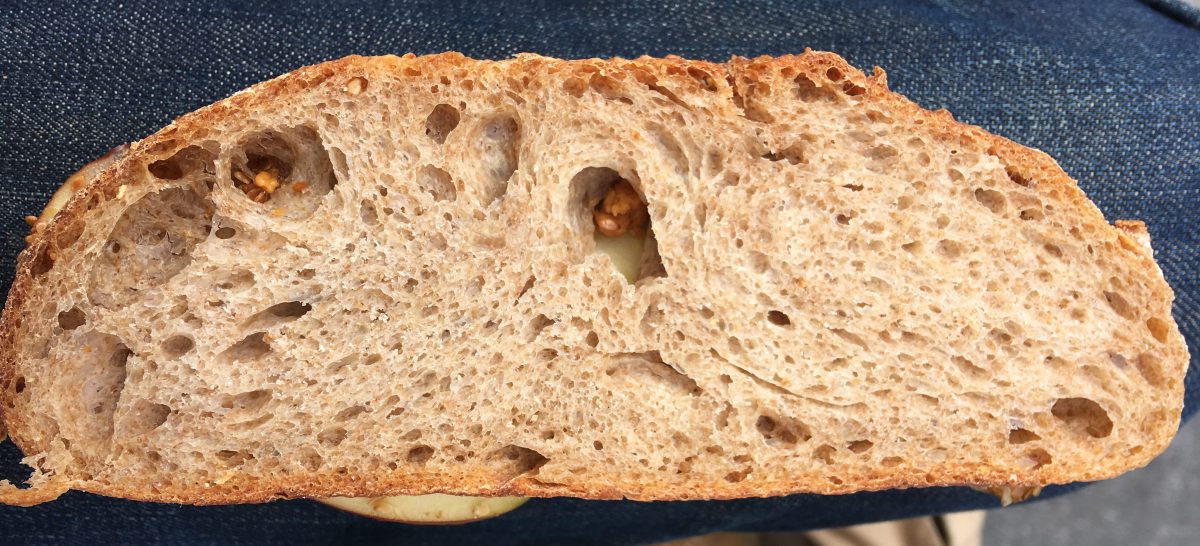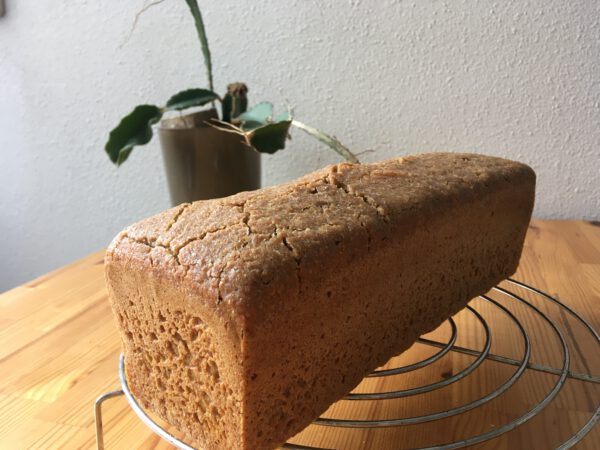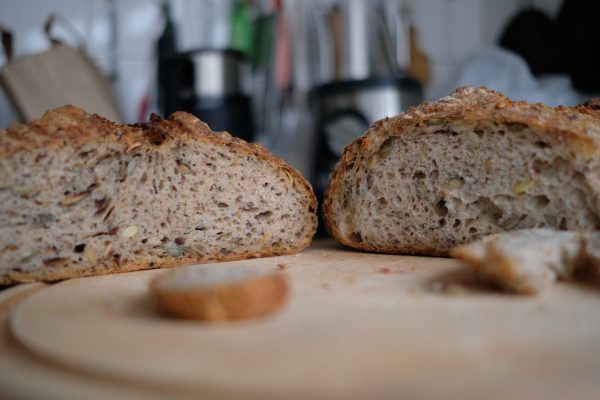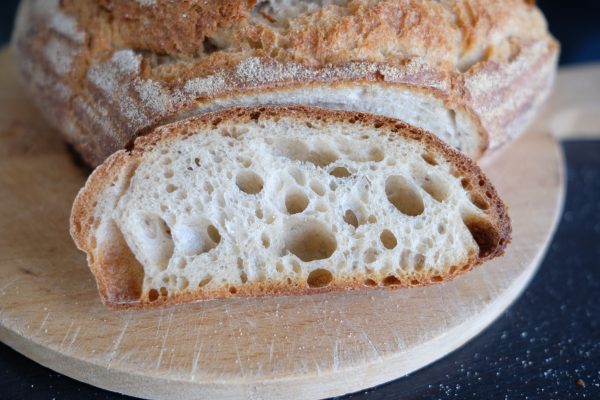Hydration: 72%
Pre-ferment: 15%
In the Netherlands we have a type of bread called bruinbrood. It literally translates as ‘brown bread’. Until I started being serious about breadbaking I believed it was the healthiest type of bread available. The bread with the lightest color, witbrood (I guess you by now you have figured Dutch isn’t so hard – it means ‘white bread’), is the least healthy, I was always taught. So, bruinbrood, being the darkest bread, must be the most healthy. Right? Well, that’s what many bakers are trying to make one believe and many consumers do so indeed.
The color of bread can be a rather good indicator of its nutritional value: a 100% flour bread is white-yellow and a whole grain bread is brown. Commercial bruinbrood ,however, is virtually always colored with roasted malt making it very dark and hard to discriminate by eye from whole grain breads. So what is bruinbrood? Bruinbrood is simply a bread baked with a mixture of flour and whole-grain meal, for example in a ration of 1:1. So, it that so bad? No not at all, it can be super tasty and actually enables me to used certain types of whole-grain meal that I would otherwise not be able to use. Just don’t try to pretend it is the most healthy type of bread.
So, here are the result of an experiment with 50% wheat flour and 50% whole-grain Emmerwheat. The experiment is inspired on the recipe for Whole-Wheat Levain by Jeffrey Hamelman (Bread, 1st edition page 168). Hamelmans recipe isn’t perfect, besides that I think the name implies that it is a whole-grain bread (which it isn’t), the hydration is too low and there’s more taste in the ingredients than the recipe manages to extract. The following experiment isn’t perfect yet but at least tastes better.
Overall formula
| Ingredient | Weight | Percentage |
| Wheat flour | 600gr | 50% |
| Whole-grain Emmerwheat meal | 600gr | 50% |
| Water | 863gr | 72% |
| Salt | 21,6gr | 1,8% |
| Total | 2084,6 | 173,8% |
Recipe
- Make the following pre-ferment with 100% hydration and let it ferment for ~ 12hr at 21°C (70F). Use a 100% hydration mature culture.
Pre-ferment
| Ingredient | Weight | Percentage |
| Whole-grain Emmerwheat meal | 181gr | 100% |
| Water | 181ml | 100% |
| Mature whole-grain-sourdough culture | 38gr | 21% |
| Total | 400gr | 221% |
- Combine the following ingredients, mix until evenly distributed and let stand for 1½ autolysis at 21°C (70F).
| Ingredient | Weight | Percentage |
| Wheat flour | 600gr | 59% |
| Whole-grain Emmerwheat meal | 418gr | 41% |
| Water | 681gr | 69% |
| Total | 1699gr | 169% |
- Following autolysis, mix the following ingredients and knead for 5-10mins (by hand ). The dough doesn’t require much kneading to reach it’s maximum strength. You’ll notice the dough is rather different from a 100% wheat dough. The addition of lots of Emmerwheat with high a high gliadin/glutenin ratio (the opposite of wheat) is absolutely noticeable (Wieser, 1999).
| Ingredient | Weight |
| Dough from autolysis | 1699gr |
| Pre-ferment | 384gr |
| Salt | 21,6gr |
| Total | 2084,6gr |
- Bulk-fermentation: 2½hr at 21°C with two stretch-and-folds with 45min intervals.
- Divide and shape in 700gr loaves. This dough is notable more difficult than 100% wheat dough. If you have difficulties getting enough strength in the dough to bake directly on the hearth of the oven, use a baking pan.
- Proofing: 2 – 2½hr at 21°C.
- Preheat oven very hot (I turn mine at max, 275C).
- Bake with steam at 230C for 15 mins, and lower the temp to 210 for another 25-30 min

A sandwich of 50% Emmer sourdough bruinbrood 
After 10min of kneading. Sticky stuff due to the Emmerwheat.




Leave a Reply